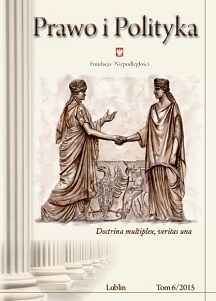Formalne determinanty pozycji przywódców w strukturach pozaparlamentarnych partii politycznych w Polsce
Formal determinants of the position of leaders in the structures of non-parliamentary parties in Poland
Author(s): Maciej HartlińskiSubject(s): Government/Political systems
Published by: Fundacja Niepodległości
Keywords: party leader; party organization; intra-party democracy political parties Poland
Summary/Abstract: The study is aimed at analysing the statutes of 76 political parties and constitutes an attempt at characterising the formal position of party leaders in the structures of Polish non-parliamentary parties. Formal conditions determining leadership in non-parliamentary parties may be characterised with references to a few issues. Almost all of such parties have either of two formally determined positions of the leader. This is chairman (35) and president (33). In the majority of the parties (44) the position of the leader is an independent body set apart in their organisational structure. In fewer parties, the leader is the head of a collegiate body. Classifying the hierarchy of party bodies, in the greatest number of cases the leader was not set apart (29). If it was done, the leader received the second (20) or the third (14) position. The leader almost always, as a result of the position he occupies, becomes a member of other key bodies in the party. In slightly more than half of the parties (39), the leader has an opportunity to decide about the choice of his closest collaborators thanks to the right to propose candidates to take such positions. The length of the term in office is also different in different parties, although the most common period is 4 years (31 parties). In 63 out of 71 parties the leader is chosen by the delegates of local structures during a national congress. As regards the proposed research hypothesis, non-parliamentary parties do not significantly differ from the mainstream parties. There are no considerable disproportions with reference to the applied terminology, selecting various bodies, solutions concerning terms of office, automatic election to the most important decision-making bodies, as well as methods of selecting the leaders. The only difference concerns the fact that in non-parliamentary parties the leader is often not set apart against other party bodies, which is a situation quite rare among the main political parties. As far as the distinguished indexes are concerned, there is of course some degree of variation, yet both parliamentary as well as non-parliamentary parties show similar tendencies in formal positioning of the leaders in their structures.
Journal: Prawo i Polityka
- Issue Year: 2015
- Issue No: 6
- Page Range: 40-64
- Page Count: 25
- Language: Polish

